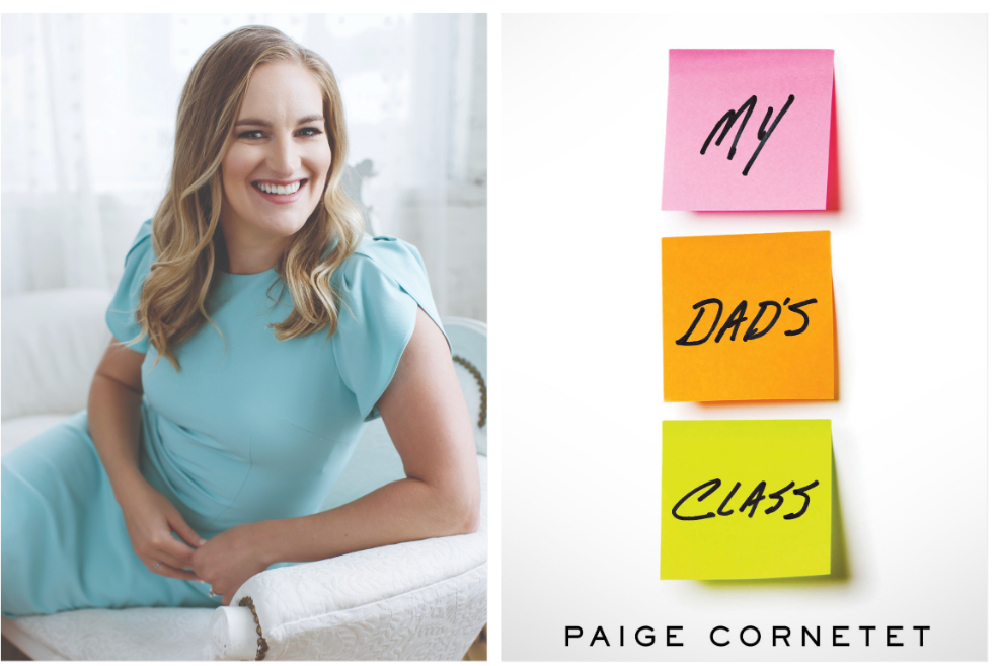With so many businesses shuttering their doors, at least for a period of time, because of COVID-19, the national and local economy is on the forefront of everyone’s mind. Amidst all of the news, there are a lot of learning points to teach our kids, one of the most vital being the importance of saving money.

Paige Cornetet, My Dad's Class
As a child, my mom and dad taught us that first we earn money, then we save it, and then we spend it. To help us with these concepts, they established the “Cornetet National Bank,” essentially creating a family economy where we could practice the financial concepts they wanted us to learn before we went out into the big, wide world.
Why establish a family economy?
Finances are an intricate part of everyone’s life, providing for both basic needs, like food and shelter, as well as the fun stuff, like new shoes and vacations. The way you handle finances can also affect your free time and, truly, time is one of the biggest gifts we have.
My parents felt that if we learned to be responsible with finances and we understood the structure of the economy, we’d be more prudent with our funds, giving us more choices regarding what to do with our time, including our free time, as we grew.
As early as the age of 4 or 5, my parents taught us that money was an intricate part of what we’d be able to do in life. Their teachings at that point, as I mentioned above, were very rudimentary:
· First, we earn money,
· then we save money, and
· then we spend money.
In future posts, we’ll talk more about actionable ways you can teach your kids about those principles. For now, let’s talk about how you can establish your own family bank.
Establishing a Family Bank
My parents chose the age of 5 to allow us to participate in the family bank, which worked well. You can choose any age you deem appropriate, although I wouldn’t begin much later than 5. When each child is eligible:
1. Purchase one clear durable plastic container for your child. It’s important that it’s clear, so she can see through it.2. Write her name on the top of the container.
3. Purchase a small blank ledger and a pen for your child. (Basically, this is just a small, lined notebook that fits in the container). This is where she’ll track her weekly statement/ income. You may be tempted to use a different format, like an excel spreadsheet or mobile app, but science shows us that using pen and paper can be very effective in helping children concretely understand these ideas.
4. Give your family bank a name. I like my parents’ example of using your last name, then “National Bank.”5. Explain the concept of the family bank to your children. The main points you want to get across are:
o This is your bank. Every week on Saturday (or any day of your choice), the bank will be open.
o When it’s open, you “earn” money. At this stage, you’re simply giving your child the money, which is equivalent to their current age. So, a 5-year old, for example, would “earn” $5 each week.
o Once you’ve earned your money, you decide how much you want to save in your bank, which is the clear plastic container.
o You’ll keep track of your savings in your ledger
o At the end of every month, the bank will give you a percentage of the amount that you save. (Make it an easy percentage for kids, like 50% or 100%, so they can easily do the math.)
A few more ideas:
Your kids won’t get all of the concepts right away, and that’s okay. They’ll learn as they go and experience is a wonderful teacher.
During the days that the family bank isn’t open, be sure to keep the plastic containers out of sight, so you don’t have any unauthorized accessing of funds.
As you go through each day, find opportunities to reiterate the values of earn, save, and spend. It helps children – it’s important to learn these habits early.
Establishing a family bank is relatively easy and teaching the principles is fairly simple, although not always easy. Speaking as a child who had a family bank, though, and learned the lessons well, I can attest that it’s well worth your effort!


